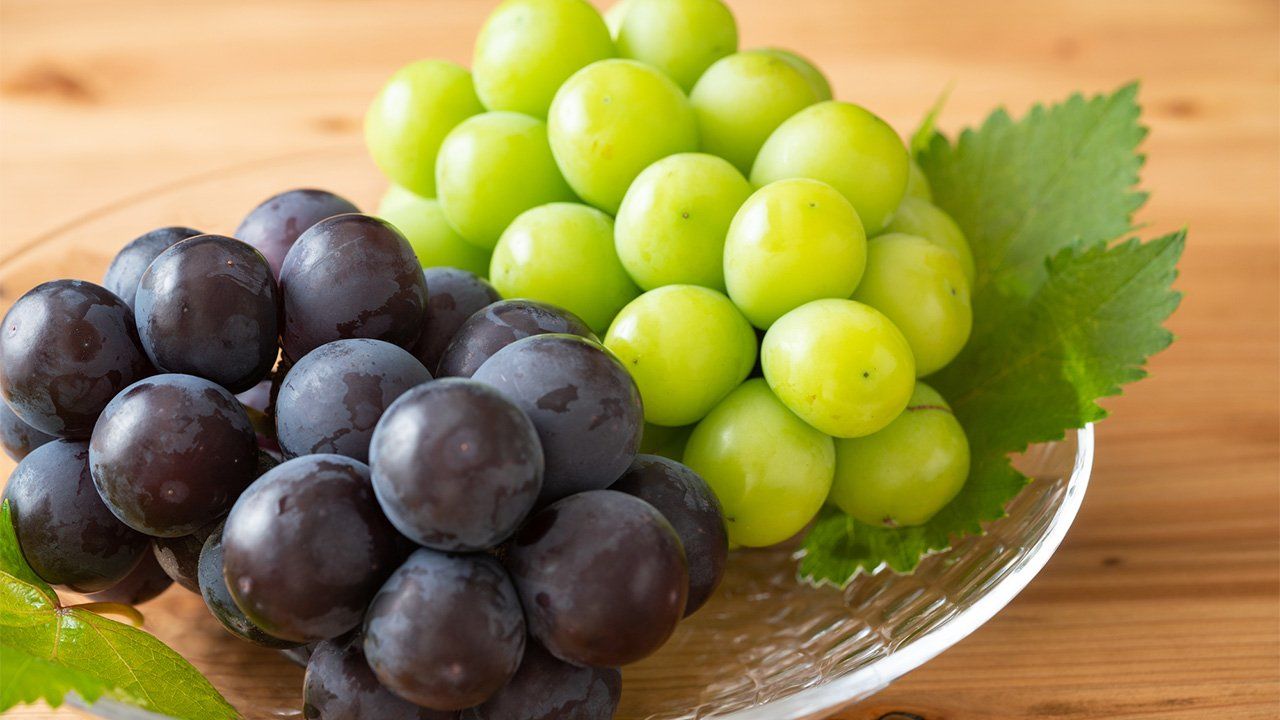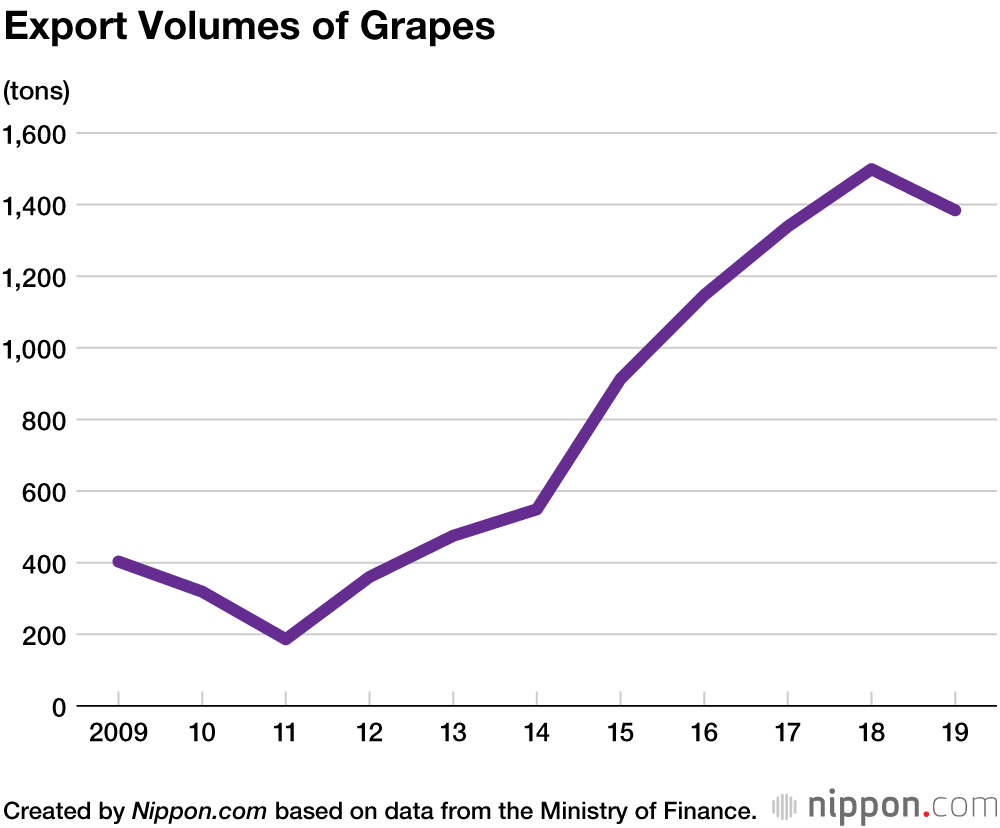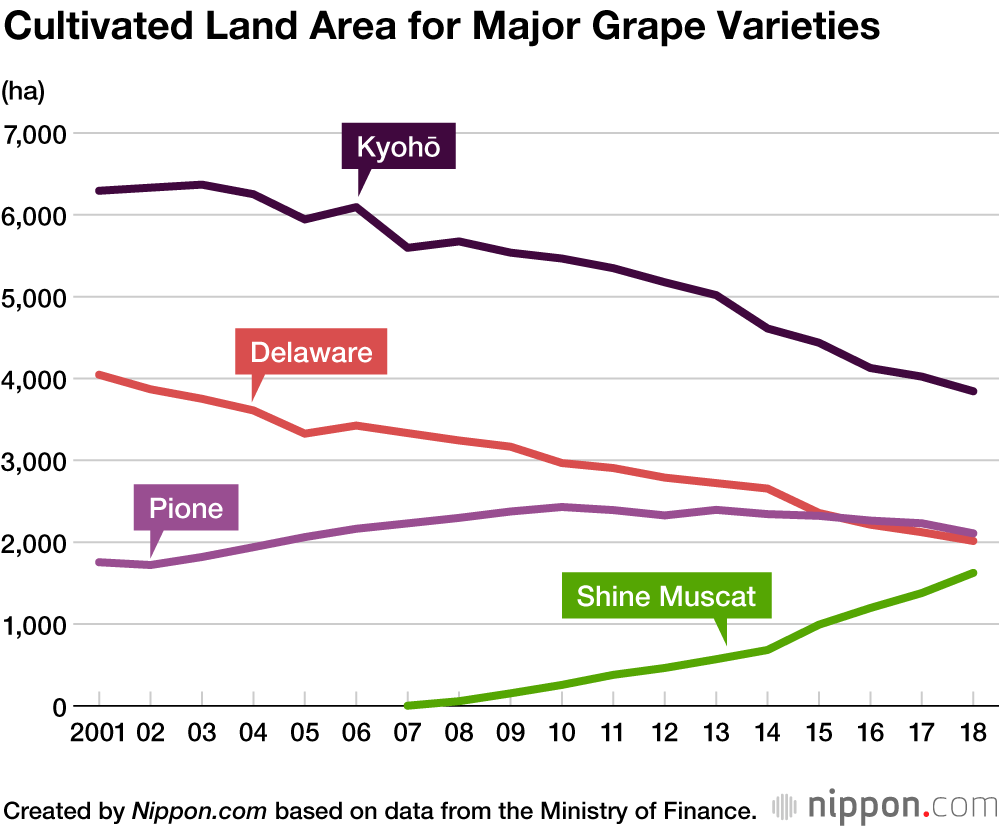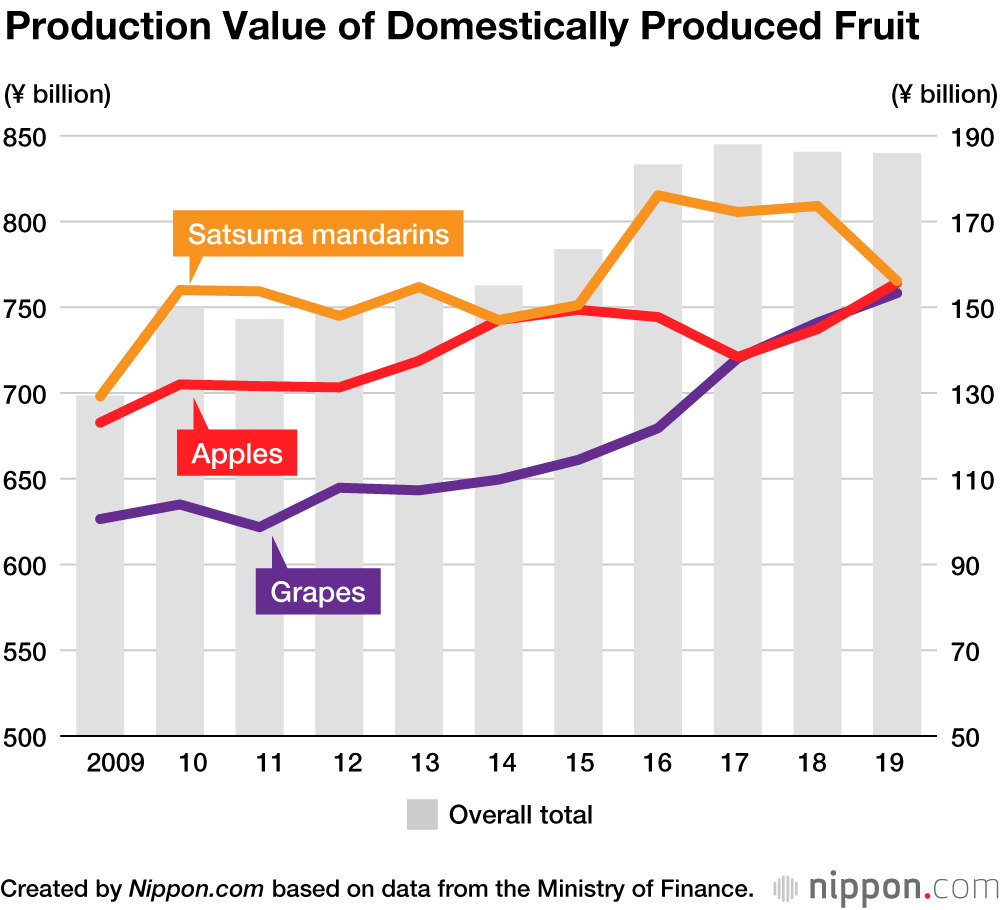
Pick of the Vine: Japanese Grape Growers Turning to Shine Muscat
Society Economy Lifestyle Food and Drink- English
- 日本語
- 简体字
- 繁體字
- Français
- Español
- العربية
- Русский
Sharp Rise in Exports, Mainly to Asia
Exports of Japan-produced grapes have been rapidly increasing since 2014. In 2018, they hit a record high. The main export destinations are Hong Kong, Taiwan, and Singapore, accounting for more than half the volume, and varieties with large attractive fruit like Pione and Shine Muscat have been selling well as gifts. In an effort to further increase exports, development is ongoing of varieties where the fruit keep fresher for longer and are less likely to fall from the vine.
Favorite Varieties Change with the Times
Grape varieties are categorized by color—red, black, and green. Delaware, Kōshū, and Kaiji represent the red varieties; Kyohō and Pione are renowned black varieties; and Shine Muscat and Niagara are popular green ones.
In the past, nearly half of the total cultivated land for grapes in Japan was dedicated to the red varieties, with Delaware as the main type. Then the black variety Kyohō expanded its share to take top position in the market, but after peaking in 2003, the amount of cultivated land for it began to shrink. Now, it is the green variety Shine Muscat that is gaining momentum. These large seedless grapes have edible skin, and are easy to eat, so they have become extremely popular with everyone, from children to the elderly. Additionally, even though they have thin skins, they don’t squash easily and stay fresh a long time, making them a firm favorite with producers too. This variety was registered in 2006 and since then the amount of cultivated land for it has been increasing at more than 20% per year.
Shine Muscat: Expensive, but Selling Well
Price is always a question, but popular varieties like Pione and Shine Muscat have a higher wholesale price compared to Delaware and Kyohō. Kyohō sells for ¥1,254 a kilo and Delaware for ¥1,030. In contrast, Pione is ¥1,332 and Shine Muscat ¥2,123 (2020 prices, Tokyo Metropolitan Central Wholesale Market). In 2019, Shine Muscat overtook Kyohō as the top grape by quantity coming into the market, proving it could sell well, despite its high price.
While fruit production on the whole is in decline, the output of grapes is thriving. Year on year, the gap with Satsuma mandarins and apples—the most popular fruit—has been closing and in 2018, grapes moved up to second place, behind mandarins. Buoyed by Shine Muscat, the performance of grapes may well continue going from strength to strength.
(Translated from Japanese. Banner photo © Pixta.)


